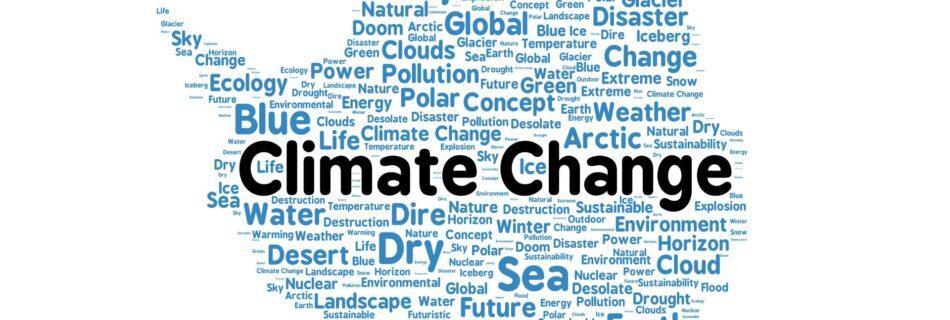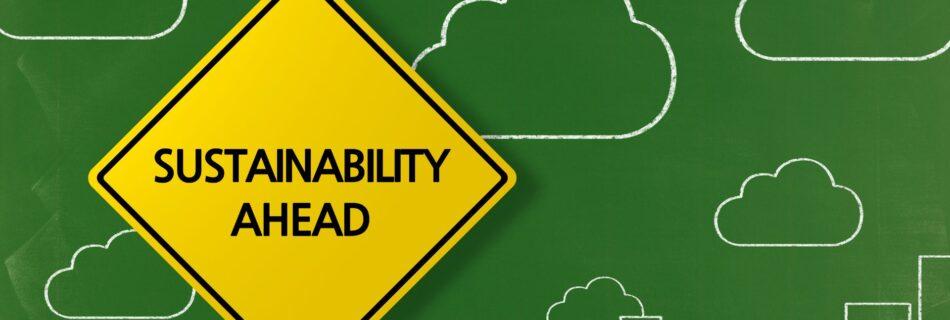5 Bahaya dari Pengelolaan Sampah Organik Tidak Bertanggung Jawab
Semua orang di berbagai belahan bumi pasti memahami bahwa pengelolaan sampah tidak bertanggung jawab dapat menimbulkan kerugian dan membahayakan kehidupan serta lingkungan. Sayangnya, masih banyak sekali individu bahkan kelompok yang mengabaikan hal tersebut. Di beberapa negara berkembang, pengelolaan sampah banyak yang belum berjalan dengan cara yang sehat. Metode pengolahan sampah open dumping dengan membuang sampah langsung ke lahan terbuka tanpa penanganan terlebih dahulu menjadi yang umum digunakan. Akibatnya sampah terus menumpuk, menciptakan timbunan yang terus meninggi, dan terancam longsor serta terbakar. Sampah organik menjadi salah satu jenis sampah yang pengolahannya belum optimal, seperti yang terjadi di Indonesia. Padahal, sampah organik yang dibuang sembarangan dapat menghasilkan kontaminasi dan bahaya. Ketahui lima bahaya dari pengelolaan sampah organik tidak bertanggung jawab! 1. Menghasilkan Gas Rumah Kaca Faktanya, tumpukan sampah organik di alam terbuka dapat berkontribusi dalam meningkatkan efek gas rumah kaca penyebab pemanasan global. Sampah organik seperti sisa makanan, daun, atau limbah sisa dapur jika dibuang ke lingkungan akan mengalami pembusukan secara anaerob. Sampah organik yang membusuk di tempat pembuangan sampah (TPA) tanpa pengelolaan yang tepat akan menghasilkan gas metana (CH4), sebuah gas rumah kaca yang punya peran 25 kali lebih kuat dibandingkan karbondioksida (CO2) dalam memerangkap panas. Kondisi ini akan meningkatkan dampak perubahan iklim, menambah pencemaran terhadap atmosfer, serta menyumbang pada pemanasan global. 2. Mencemari Lingkungan dan Menjadi Sumber Penyakit Sampah organik yang membusuk akan menghasilkan cairan berwarna hitam atau cokelat yang disebut air lindi (leachate). Air lindi bisa kita jumpai di TPA yang kemudian dapat meresap ke dalam tanah atau mencemari air sumur sekitar, juga dapat mengalir jauh mengikuti aliran sungai atau danau dan mencemari ekosistem yang umumnya merupakan sumber perairan yang penting bagi masyarakat. Air lindi mungkin saja saling bercampur dengan berbagai senyawa kimia berbahaya dan bakteri patogen tertentu. Dampak negatifnya, air lindi bisa menurunkan kualitas air tanah, merusak ekosistem alam sekitar, dan potensi risiko kesehatan bagi manusia dan hewan. 3. Membebani Lahan TPA Jumlah timbulan sampah memang semakin tidak terkendali setiap harinya. Pada tahun 2024 saja, jumlah sampah yang dihasilkan masyarakat Indonesia mencapai 73,2 juta ton per tahun, menurut data Kementerian Lingkungan Hidup (KLH). Baca juga artikel lainnya : Ancaman Limbah Batu Baterai: Masalah yang Belum Terselesaikan di Indonesia Dari jumlah total sampah tersebut, sekitar 62 persen di antaranya merupakan komposisi sampah organik dan baru sekitar 15 persen bagian saja yang dikelola dengan cara yang berkelanjutan. Itu artinya, ada lebih banyak sampah yang berakhir di TPA atau mungkin sudah bocor dan mencemari lingkungan. Jika sampah tidak dipilah, volume sampah akan meningkat drastis dan terus bertambah, yang mempercepat umur pakai TPA dan menaikkan biaya pengangkutan serta pengelolaan sampah. 4. Menghambat Daur Ulang Sampah Anorganik Meskipun sama-sama dianggap kotor, sampah anorganik ternyata punya kesempatan yang lebih besar untuk dapat diolah kembali menjadi barang baru yang bermanfaat. Akan tetapi, sampah anorganik, seperti plastik atau kertas, yang bercampur dengan sampah organik disaat pembuangannya bisa membuat sampah anorganik jadi kotor dan sulit didaur ulang. Kondisi ini membuat material plastik dan kertas tersebut menurun nilai ekonominya. Material anorganik pun jadi kotor dan sulit untuk didaur ulang. Mengarah pada meningkatnya jumlah sampah yang akhirnya berakhir di TPA atau dibakar. 5. Bentuk Pemborosan Sumber Daya Masih selaras dengan penjelasan di atas, sampah organik seperti contohnya sisa makanan, sayur dan buah, serta sampah dedaunan umumnya masih bisa diolah menjadi produk yang bermanfaat bagi alam sekitar. Sampah organik tersebut dapat diubah menjadi pupuk kompos yang berguna untuk pertanian atau sebagai bahan baku biogas untuk sumber energi alternatif. Tanpa pengelolaan yang tepat, semua potensi ini terbuang sia-sia. Sampah organik tidak boleh dianggap remeh. Jika tidak dikelola dengan baik, ia bisa menjadi sumber polusi, penyakit, dan kerugian ekonomi. Tentang Satuplatform Satuplatform merupakan platform all-in-one yang menyediakan solusi komprehensif untuk ESG management, carbon accounting, dan sustainability reporting. Kami dapat membantu Anda mencapai tujuan keberlanjutan dengan menjadi yang terdepan sesuai regulasi yang berlaku. Dengan fitur-fitur Satuplatform, Anda dapat: Satuplatform juga didukung oleh tim ahli yang berpengalaman di bidang keberlanjutan bisnis. Tim ahli kami akan membantu memahami kebutuhan Anda dan mengimplementasikan solusi yang tepat. Hubungi Satuplatform dan dapatkan FREE DEMO sekarang! Wujudkan bisnis yang berkelanjutan, berdaya saing, dan bertanggung jawab bersama Satuplatform. Similar Article Air Minum Kemasan Plastik Dilarang di Bali, Apa yang Terjadi? Pemerintah Provinsi Bali baru saja melakukan langkah yang besar dalam upaya menjaga kelestarian lingkungan, yakni dengan melakukan pelarangan penjualan air minum dalam kemasan (AMDK) plastik di Bali. Baca juga artikel lainnya : Mengenal Eutrofikasi, Ancaman terhadap Kesehatan Ekosistem Air Melansir laman Tempo, Gubernur I Wayan Koster melalui Surat Edaran Gubernur Bali Nomor 9 Tahun 2025 yang diterbitkan pada awal April lalu, secara resmi melarang produsen dan distributor untuk mengedarkan air minum dalam kemasan plastik dengan volume di bawah satu liter. Larangan ini tidak hanya diperuntukkan bagi produsen besar, berlaku juga untuk para pelaku usaha kecil dan menengah (UMKM) yang menjual… Masa Depan Bisnis Adalah Bertanggung Jawab, Benarkah? Sustainability atau Keberlanjutan bukan hanya sekadar tren musiman di era sekarang ini, melainkan telah menjadi suatu kewajiban yang dapat mendorong kemajuan dan perkembangan bisnis secara signifikan. Tren global menunjukkan bahwa masa depan bisnis adalah dengan menjadi lebih bertanggung jawab, baik secara sosial dan lingkungan. Sementara bisnis yang tidak melibatkan sustainability ke dalam aktivitas bisnis mereka berpotensi semakin ditinggalkan oleh konsumen juga investor. Tren Konsumen yang Peduli Keberlanjutan Pernyataan di atas bukanlah omong kosong belaka. Hal ini selaras dan sesuai dengan hasil Survei Suara Konsumen 2024 yang diterbitkan PwC pada 15 Mei 2024 lalu. Berdasarkan survei tersebut, sekitar 80 persen konsumen,… Berbagai Inovasi dalam Pengelolaan Sampah yang Bisa Dimanfaatkan Indonesia bisa dibilang masih sangat memerlukan berbagai inovasi dan kemajuan dalam kegiatan pengelolaan sampah untuk membantu sampah ditangani dengan cara yang lebih efektif. Sampai saat ini, metode pengelolaan sampah yang paling populer di Indonesia ialah metode konvensional di mana sistem kumpul-angkut-buang menjadi yang paling umum digunakan. Masyarakat sudah sangat terbiasa untuk hanya membuang sampah tanpa dipilah, kemudian sampah dikumpulkan, diangkut, dan dibuang ke Tempat Pembuangan Akhir (TPA). Dengan sistem tersebut, sayangnya penumpukan sampah tidak dapat terhindarkan. TPA seringkali mengalami overload atau kelebihan kapasitas karena sampah masuk setiap hari dengan kuantitas yang sangat besar. Melihat …
Read more “5 Bahaya dari Pengelolaan Sampah Organik Tidak Bertanggung Jawab”











